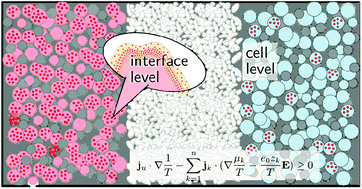Mathematical modeling of intercalation batteries at the cell level and beyond
Abstract
Mathematical modeling of lithium ion batteries is a key feature for a profound understanding of the whole spectrum of phenomena occurring in such electrochemical systems. Due to their inherent multi-scale nature, batteries cannot be described with a single equation. It is necessary to couple the physical chemistry, reaction kinetics, ion flow, heat generation, et cetera, appropriately to obtain a coupled set of equations (a model) which has predictive efficiency. To adapt ideas and expertise obtained in the field of modeling to future type of batteries, new electrode or electrolyte materials or to improve the model reliability, a universal basis is desirable. In this sense, we carefully derive the commonly used set of equations based on the most general form of linear non-equilibrium thermodynamics. Due to chemical and physical assumptions the set of equations is reduced to facilitate numerical computations. Transport equations for a general electrolyte are derived and different electroneutrality assumptions are applied to obtain Poisson–Nernst–Planck-type equations or a generalized Ohmic law. Electrodes are described with single and many particle models, e.g. for phase separating materials, and the transition to porous


 Please wait while we load your content...
Please wait while we load your content...